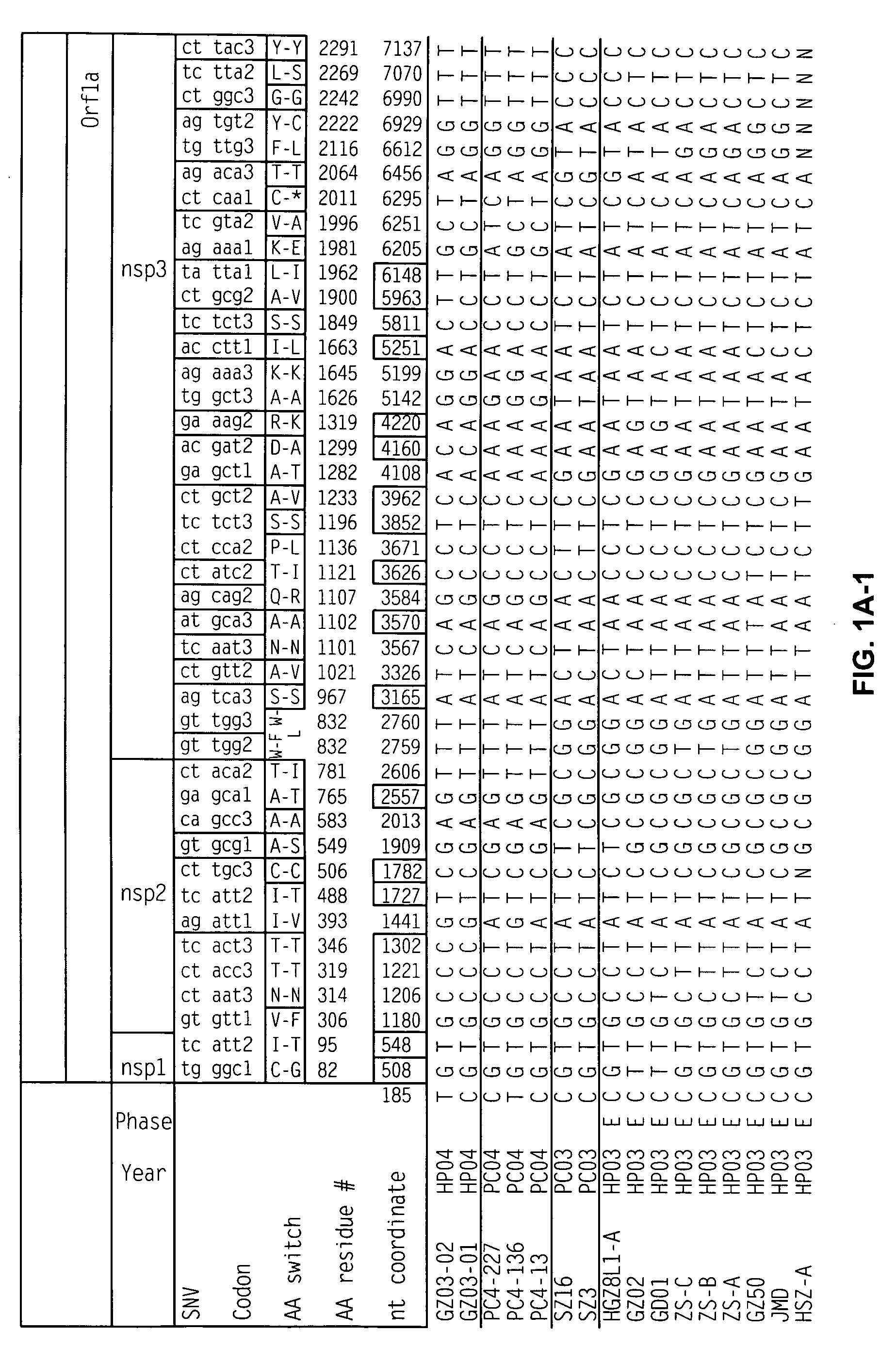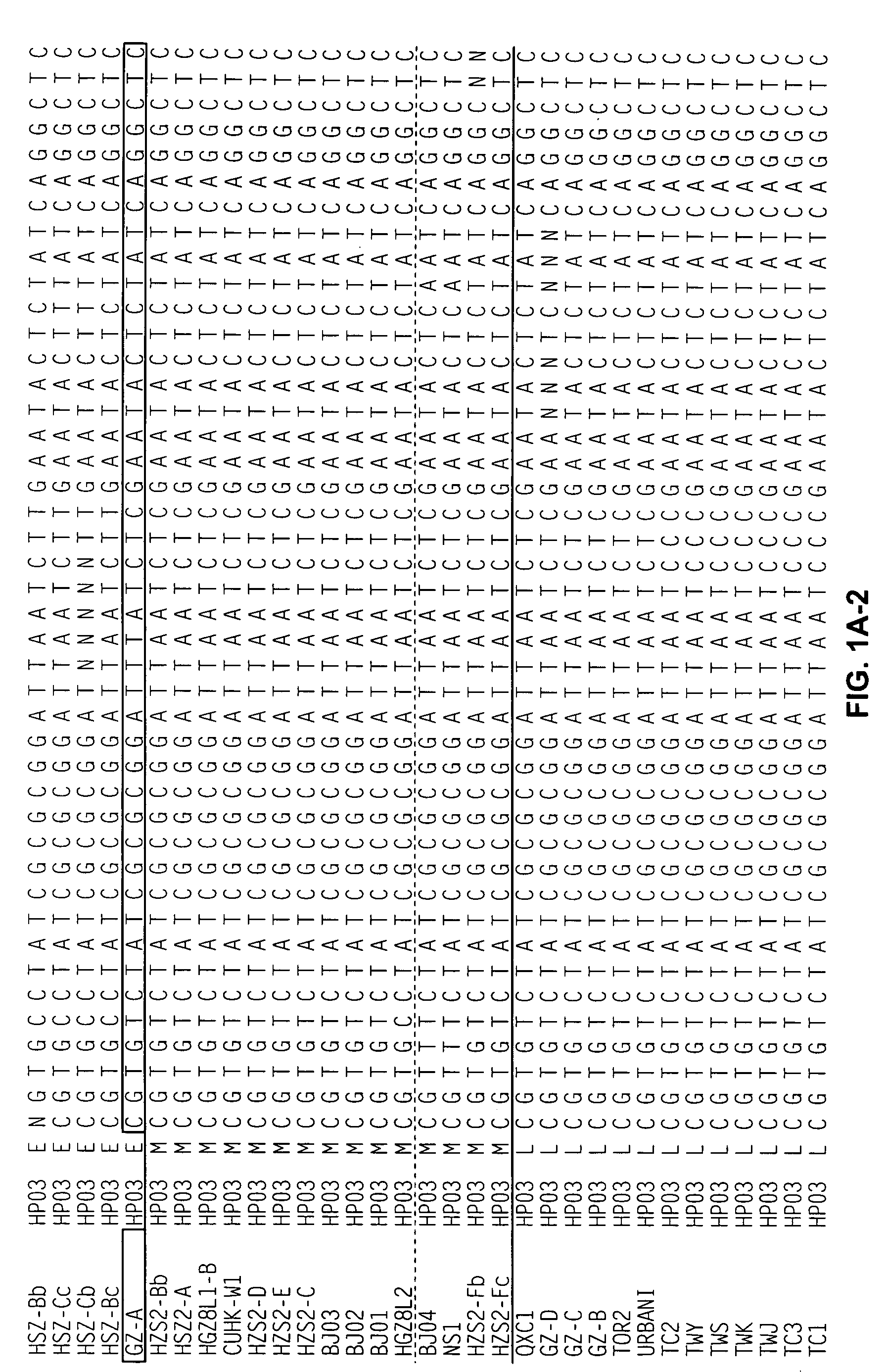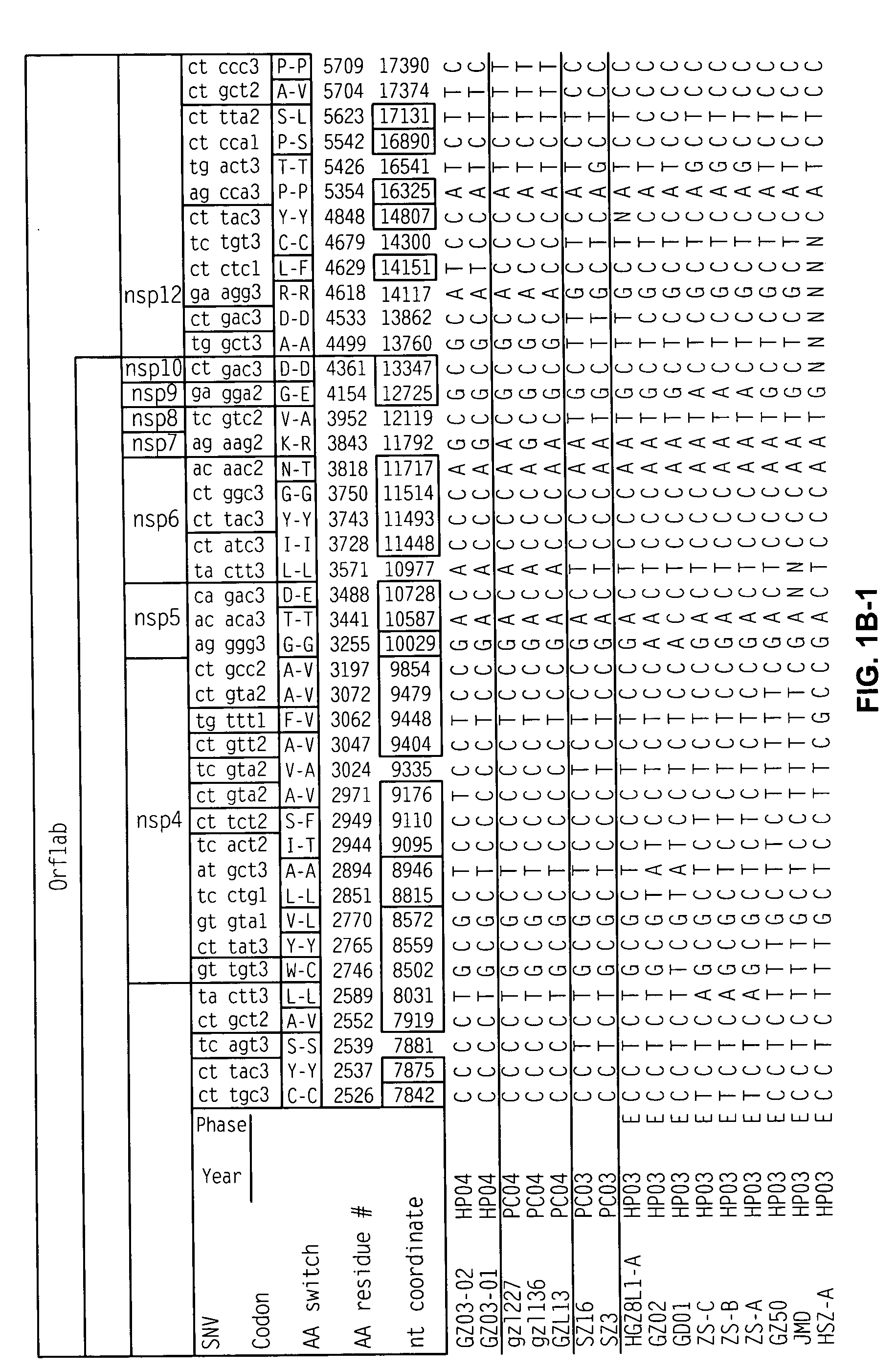Characterization of the earliest stages of the severe acute respiratory syndrome (SARS) virus and uses thereof
a technology of severe acute respiratory syndrome and sars coronavirus, which is applied in the field of characterization of the earliest stages of the severe acute respiratory syndrome (sars) virus, can solve the problems of inability to fully understand the exact form of the virus at or immediately after transmission, and limited data on the evolution of the sars coronavirus during these earliest outbreak stages
- Summary
- Abstract
- Description
- Claims
- Application Information
AI Technical Summary
Benefits of technology
Problems solved by technology
Method used
Image
Examples
example 1
Molecular Evolution of the SARS Coronavirus During the Course of the 2002-2003 SARS Epidemic
[0103] Severe acute respiratory syndrome (SARS) first emerged in Guangdong Province, China. Subsequently, the SARS coronavirus (SARS-CoV) was identified as the causative agent (Fouchier et al., Nature 423:240 (2003); Ksiazek et al, N. Engl. J Med. 348:1953 (2003); Drosten et al., N. Engl. J. Med. 348:1967 (2003); Rota et al., Science 300:1394 (2003); Marra et al., Science 300:1399 (2003)). It remains a challenge to establish the relationship between observed genomic variations and the biology of SARS (Rota et al., Science 300:1394 (2003); Marra et al., Science 300:1399 (2003); Vogel, Science 300:1062 (2003); Ruan et al., Lancet 361:1779 (2003); Guan et al., Science 302:276 (2003)). Recent molecular epidemiological studies have identified characteristic variant sequences in SARS-CoV for tracking disease transmission (Ruan et al., Lancet 361:1779 (2003); Tsui et al., N. Engl. J. Med. 349:187 (...
example 2
Cross-Host Evolution of SARS Coronavirus in Palm Civet and Humans
[0125] The coronaviruses isolated from a number of Himalayan palm civets (Paguma larvata) and a raccoon dog (Nyctereutes procyonoides) at a Shenzhen food market during the severe acute respiratory syndrome (SARS) epidemic of 2003 (April) were named SARS coronavirus-like coronaviruses (“SARS-CoV-like” coronaviruses) when it was observed that they displayed 99.8% sequence homology with the human SARS-CoV (Guan et al., Science 302:276 (2003)). However, recent analyses of palm civet and other wild animals in the Guangzhou food market of late 2003 suggested that in these animals SARS-CoV-like coronaviral loads and sequence variations were greater than those observed previously in these animals.
[0126] The molecular investigation of the characteristic viral lineages of the 2002-2003 Chinese SARS epidemic discussed in Example 1 above provides epidemiological and genetic evidence for viral adaptation to human beings. Although...
example 3
SNV Diagnostic Kit
[0141] Coronviruses are isolated and cultured from patient samples, including samples obtained from patient phlegm, excrement or tissues. Coronaviral RNA is prepared from these cultures, and cDNA is obtained using reverse transcription. Alternatively, cDNA may be directed obtained from patient samples by reverse transcription without intermediate culturing. This procedure will be particularly important for SARS-CoV or SARS-CoV-like coronaviral strains which are difficult to culture (e.g., which propagate poorly on VeroE6 cells).
[0142] PCR reactions are then performed on the cDNA obtained as above, with primers chosen depending upon the insertion(s) / deletion(s) or SNV(s) to be analyzed. For SNVs at positions 22222, 22570, 22927-22928, 22930, 23316-23317, and 23823, for example, one set of suitable primers is the sense primer GCACCCCACCTGCTCTTAATTGTTATTGGC (SEQ ID NO:6) and the anti-sense primer TATTAAAGAGCAAGTCCTCAATAAAAGACC (SEQ ID NO:7). The selection of such pr...
PUM
| Property | Measurement | Unit |
|---|---|---|
| Fraction | aaaaa | aaaaa |
Abstract
Description
Claims
Application Information
 Login to View More
Login to View More - R&D
- Intellectual Property
- Life Sciences
- Materials
- Tech Scout
- Unparalleled Data Quality
- Higher Quality Content
- 60% Fewer Hallucinations
Browse by: Latest US Patents, China's latest patents, Technical Efficacy Thesaurus, Application Domain, Technology Topic, Popular Technical Reports.
© 2025 PatSnap. All rights reserved.Legal|Privacy policy|Modern Slavery Act Transparency Statement|Sitemap|About US| Contact US: help@patsnap.com



